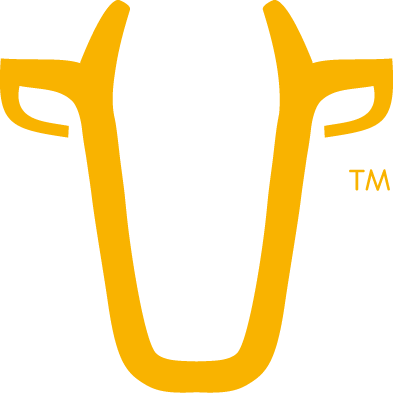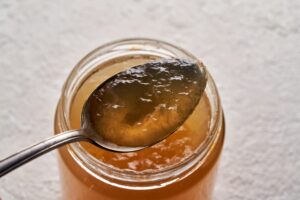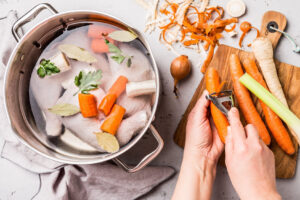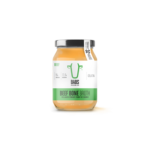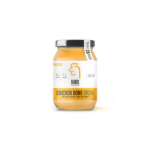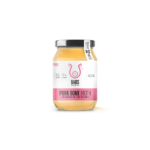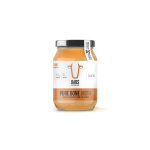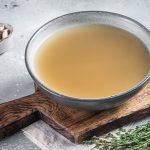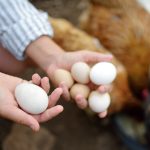Move over avocado and coconut oil – there’s a new healthy fat in the kitchen pantry. Pork fat, also known as lard, has been making its way into paleo recipes and a new wave of healthy dishes over the past couple of years.
Why the renewed interest in this traditional cooking staple?
It turns out, pork lard is incredibly good for you. In fact, the BBC listed pork fat in the top ten of its 2018 list of the 100 most nutritious foods. What makes pork fat so healthy and why should you consider cooking with it? Read on to learn why lard is having a renaissance moment, as well as tips for incorporating it into a balanced diet.
Bone Broth for Runners and Triathletes: A Great Training Aid for Hard Workouts
Whether you’re training for your first 5K run or you’re a seasoned triathlete,...
Read MoreWhat is gelatin?
Gelatin is a great source of nutrients that are widely beneficial to your...
Read MoreWhat is bone broth?
The methods for making bone broth today have been modernized for efficiency, sanitation,...
Read MoreWHAT IS PORK LARD?
Lard is pure pork fat. It’s made by rendering the fat from the rest of the animal tissue. Rendering is the process of separating the fat through boiling, steaming, or using dry heat. Like tallow, which is rendered beef fat, pork lard has a mild taste, is easy to cook with, and is incredibly rich in nutrients.
THE SKINNY ON PORK FAT AND OTHER HEALTHY FATS
Natural fats on their own aren’t necessarily bad for you. The truth is, fats are a core component of a healthy diet and essential for overall wellness. Fatty acids help with everything from immune health to supporting proper brain functioning.
The key to eating right is to choose the right fats. For example, it’s well known that trans fats – which are found in processed foods – are a problem for the cardiovascular system. And, a high ratio of omega-6 fatty acids to omega-3 fatty acids can increase inflammation in the body.
On the other hand, consuming a healthy balance of monounsaturated and polyunsaturated fats, as well as unprocessed saturated fats, may work wonders for your physical and mental well-being. You’re probably familiar with some of the best sources of good fats: nuts, avocados, olives, grass-fed beef, grass-fed butter, coconut, and fish. Get ready to add pork lard to the list!
THE TOP 5 REASONS YOU SHOULD BE COOKING WITH PORK LARD
1. It’s high in vitamin D
Lard is one of the best sources of vitamin D, a nutrient most people are deficient in today. Especially in the winter, when we are exposed to less sunlight, our vitamin D levels may drop. This can impact mood, immunity, and long-term wellness.
Because it plays a role in the regulation of calcium and phosphorous metabolism, it’s well-known as an essential nutrient for bone health. Adequate levels of vitamin D in the body are also associated with a lowered risk of developing cancer, autoimmune disorders, cardiovascular disease, and infectious diseases. Almost every cell in the body has a receptor for vitamin D, underlining how vital it is. It plays a role in growth, nervous system function, reproductive health, insulin production, and immune function.
Research conducted by the Weston A. Price Foundation found that lard from pasture-raised pigs contains 1100 IU of vitamin D per tablespoon. While all lard won’t have the same levels – factors such as the diet the pig consumed and how it was raised will impact nutrient density – pork lard is by far one of the best sources of vitamin D. You can get some of this nutrient from plants, but not very much. Mushrooms, which contain about 21 IU each, are the only plant source of vitamin D!
Even sunlight can’t compete with pork fat. The recommended 20 to 30 minutes of sun exposure a day translates to your body getting 100 to 200 IU. Cooking with lard is one of the best ways to ensure your vitamin D levels are high enough.
2. Lard is a good source of fats that support a healthy heart
Another compelling reason to use pork lard is heart health. After olive oil, which consists of 77 percent monounsaturated fatty acids, lard has the most monounsaturated fats at 48 percent. These fats help to lower blood cholesterol levels and maintain healthy cells.
Consumption of the primary monounsaturated fat in lard – oleic acid – is linked to a decreased risk of depression. A 2005 study conducted in Thailand also found that oleic acid may aid in cancer prevention. The study found that oleic acid blocks a cancer-causing oncogene in about one-third of breast cancer patients.
3. Pork fat has a high smoke point
Unlike most vegetable oils, which shouldn’t be used for high-heat cooking, lard won’t oxidize at high temperatures. It has a remarkably high smoke point of 190 C (375 F). This means you can safely use it for frying, sautéing, and baking without worrying about eating burnt, oxidized food.
4. Lard contains choline
Choline is another important nutrient that’s not found in high quantities in a lot of other foods. Only about 10 percent of the population get enough choline in their diet. Low levels are connected with everything from a greater risk of heart disease and Alzheimer’s to problems with the liver. Because choline helps to move cholesterol and very-low-density lipoproteins from the liver, a deficiency can lead to a buildup of fat and cholesterol.
Lard is a great source of choline, with anywhere from 102 mg per cup to 399 mg, depending on how the pig the lard is from was raised. Lard from organic, pasture-raised pigs will likely contain significantly more choline than that from conventionally raised pigs. Other good sources include eggs, chicken, broccoli, and cauliflower.
5. It tastes amazing!
Pork lard is definitely one of the most wholesome cooking fats you can use. But, there’s more good news: lard is delicious! With a subtle taste and aroma, everything you cook with lard won’t taste like pork. It actually enhances the flavor of roasted vegetables, grilled meats, and even baked goods.
You’ll have crispier veggies, flakier pie crusts, and mind-blowing fried fish and chicken. Sprinkle the lard with sea salt and spread over freshly baked bread – it’s simple but tastes absolutely divine.
TIPS FOR BUYING PORK LARD
Can’t wait to get your hands on some vitamin D-rich pork lard? As tempting as it is to run to the grocer’s and grab what’s on the shelf, there are a few things you should know when buying lard.
- Most commercially available pork lard is hydrogenated, which means it contains trans fats.
- Even if a lard product is labeled as having zero trans fats, it still can contain these dangerous fatty acids. Manufacturers can say ‘zero trans fats’ as long as there are less than 0.5 grams per serving.
- Unhydrogenated lard may contain unwanted chemicals such as bleaching agents and nasty preservatives.
To make sure you’re choosing a healthy source of pork lard, choose a product that’s traditionally rendered and that’s sourced from pasture-raised pigs. Make sure the animals are raised humanely, have access to uncontaminated grasses, fresh air, and sunlight, and were not treated with artificial hormones or antibiotics. If you can’t find traditionally rendered pork lard at your local grocer, you can find it at natural and organic food markets, both in-store and online.
Handcrafted pork lard is wonderfully aromatic and healthy. It’s worth having on your table so you can treat yourself to delicious, whole foods that soothe body, mind, and soul! Happy cooking!
